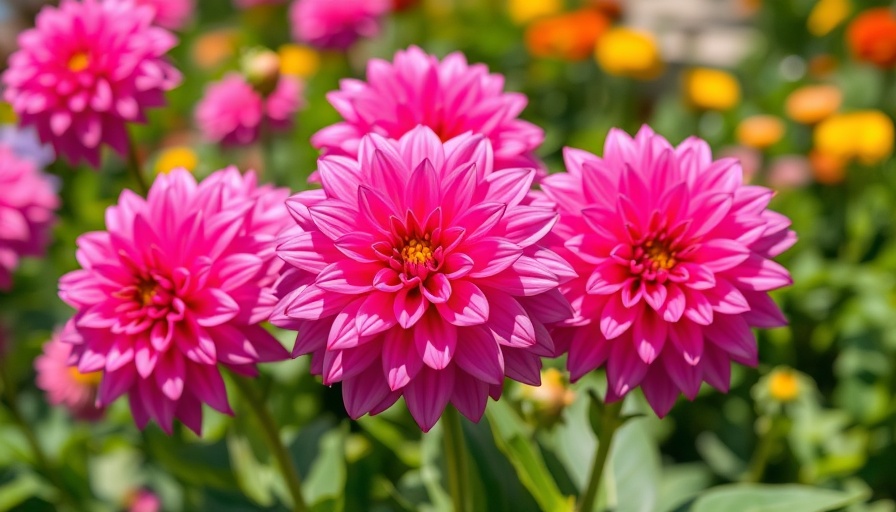
Embrace the Beauty of Late Summer Blooms
The end of summer often brings an unwelcome mix of muggy weather and pesky mosquitoes, making it easy to overlook its beauty. However, this is also the prime time for vibrant blooms that can transform your garden into an oasis of color and life. By incorporating late summer flowering bulbs into your gardening plans, you can extend the joy of flowering plants well into the fall.
Not only do these stunning bulbs add to your landscape, but they are also a smart choice for gardeners looking to maintain interest and beauty in their outdoor spaces. This article delves into the 15 best late summer flowering bulbs that can revive your garden and capture the hearts of friends and family alike.
Top 15 Late Summer Flowering Bulbs
- Agapanthus – Known as the African lily or lily of the Nile, this bulb produces gorgeous flowers that attract hummingbirds and are deer-resistant. It thrives in well-draining soils, making it perfect for various landscape designs.
- Acidanthera – These striking flowers, also known as Gladiolus murielae, add elegance to any garden with their white blooms adorned with purple markings.
- Begonia – A versatile plant, begonias offer colorful foliage and delightful flowers throughout the late summer.
- Calla Lily – With its dramatic shape and vibrant colors, the calla lily is a showstopper that thrives in moist, well-drained soil.
- Canna Lily – Known for their bold foliage and exotic flowers, canna lilies work wonderfully in tropical-themed gardens.
- Colchicum – Often referred to as autumn crocus, these bulbs surprise gardeners with their lovely pink blooms appearing in early fall.
- Crinum – These perennial lilies boast fragrant flowers and can thrive in a variety of soil conditions.
- Crocus – Although typically seen in spring, some varieties bloom late and can significantly enhance fall garden interest.
- Dahlia – Renowned for their incredible diversity in color and shape, dahlias offer a long flowering season.
- Eucomis – Commonly known as pineapple lily, these unique flowers provide an exotic feel to any garden.
- Gladiolus – Known for their tall flower spikes, gladiolus is adored for its rich color palette.
- Hyacinth – While they bloom primarily in spring, they can offer a delightful late-summer encore if managed properly.
- Iris – Often associated with spring, specific varieties can surprise us in the summer months as well.
- Nerine – Also known as spider lily, these are hardy bulbs that produce interesting, star-like flowers.
- Ranunculus – With their delicate petals and bountiful blooms, ranunculus can enliven any flower arrangement.
Why Choose Late Summer Flowering Bulbs?
Late summer flowering bulbs extend your garden’s blooming season, providing color when many other plants are out of bloom. By carefully selecting a mix of bulbs that flower at different times, you can maintain a vibrant garden throughout the warmer months. Additionally, many of these bulbs can serve dual purposes—they bloom in spring and then again in late summer for a second show of beauty!
Planting and Care Tips
To enjoy the late summer blooms, ensure that you plant these bulbs in early spring. They require well-drained soil and an area with ample sun to thrive. For colder climates, consider lifting non-hardy bulbs in fall to prevent frost damage. Alternatively, applying mulch can help protect that which is frost-resilient.
Creating a Flower Garden for Every Season
Incorporating late summer flowering bulbs not only beautifies your outdoor space but also aligns with sustainable gardening practices. One effective way to do this is by blending these bulbs with existing plants. Carry out companion planting to create a diverse plant ecosystem, which can aid in pest control and attract pollinators.
Gardening Tips: Consider implementing raised garden beds for better management of soil conditions and water retention. Additionally, grouping plants of similar needs allows for easier maintenance.
Design Ideas for Your Flower Garden
Your late summer flowering bulbs deserve a prime spot in the garden. Use them strategically to frame pathways, create focal points near seating areas, or even as stunning borders around low-maintenance plants. Vertical gardening techniques can also showcase these dynamic blooms while saving space.
Embracing late summer flowering bulbs not only enriches your landscape but amplifies your overall gardening experience, granting you the opportunity to enjoy vibrant blooms long after spring's fleeting flowers have departed.
Conclusion: Plant Now, Enjoy Later
As you plan your garden this season, consider the beauty and benefits of late summer flowering bulbs. They can add significant color as your garden transitions into autumn, making them essential in any flower gardening venture.
Now is the perfect time to dive into the exciting world of late summer blooms and propel your gardening journey. Embrace your local gardening community, share knowledge, and get inspired by the flowering potential within your backyard.
 Add Row
Add Row  Add
Add 




Write A Comment